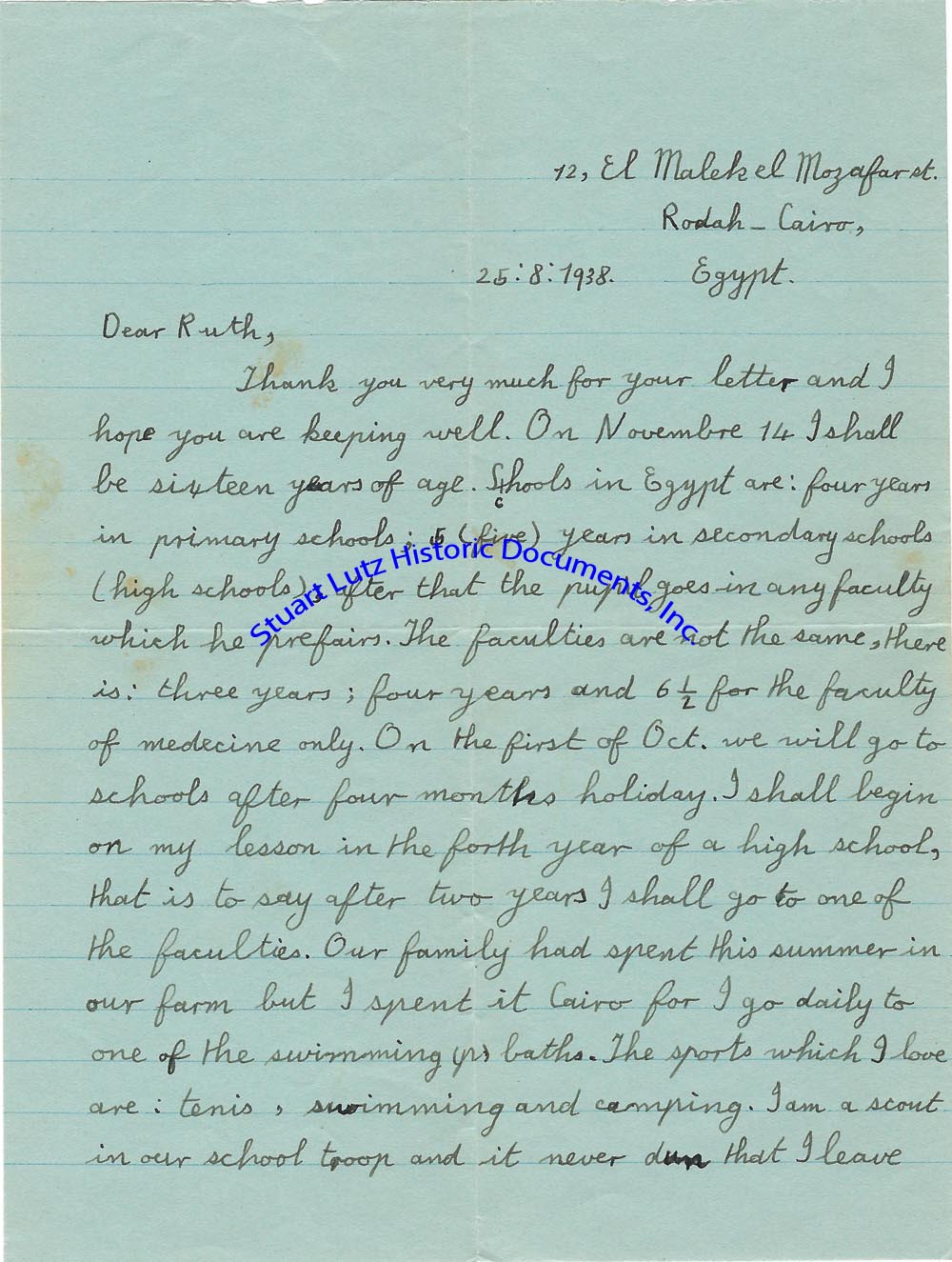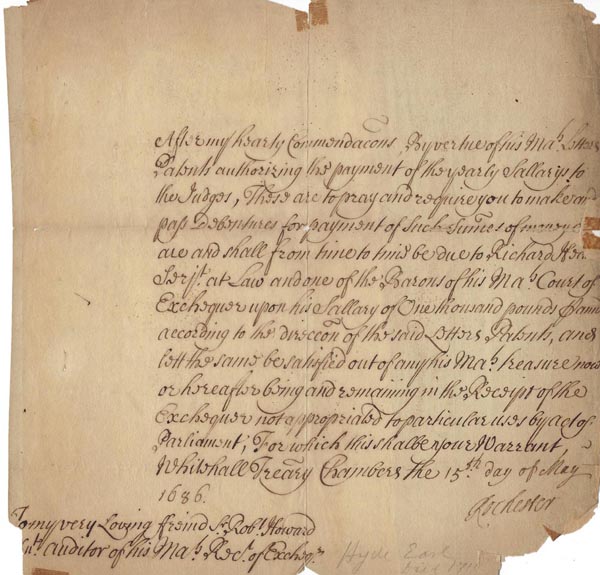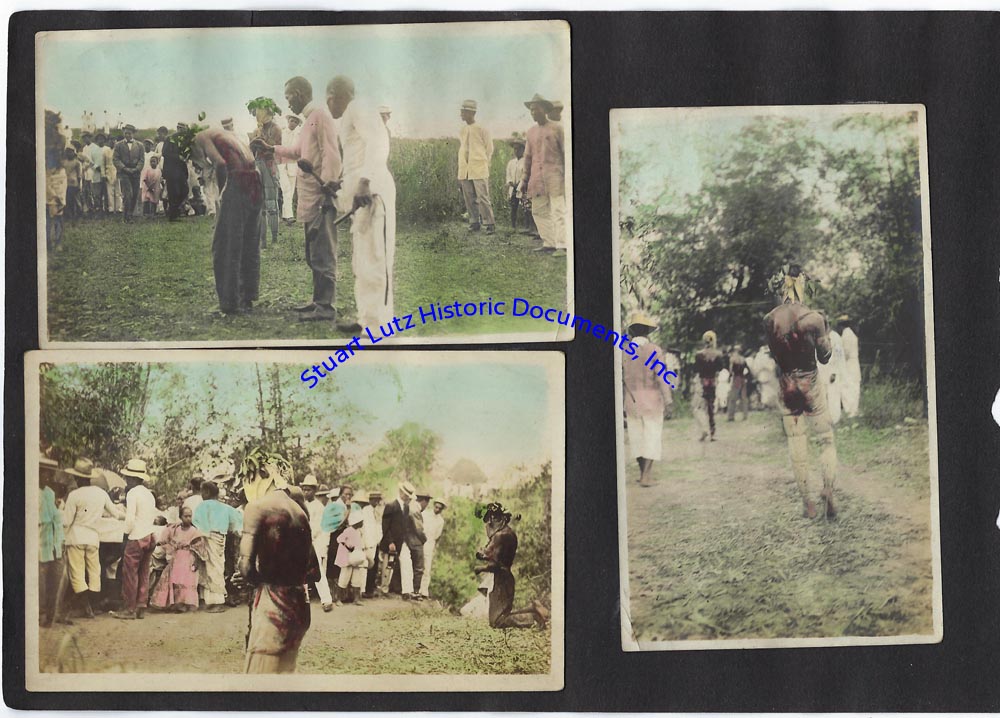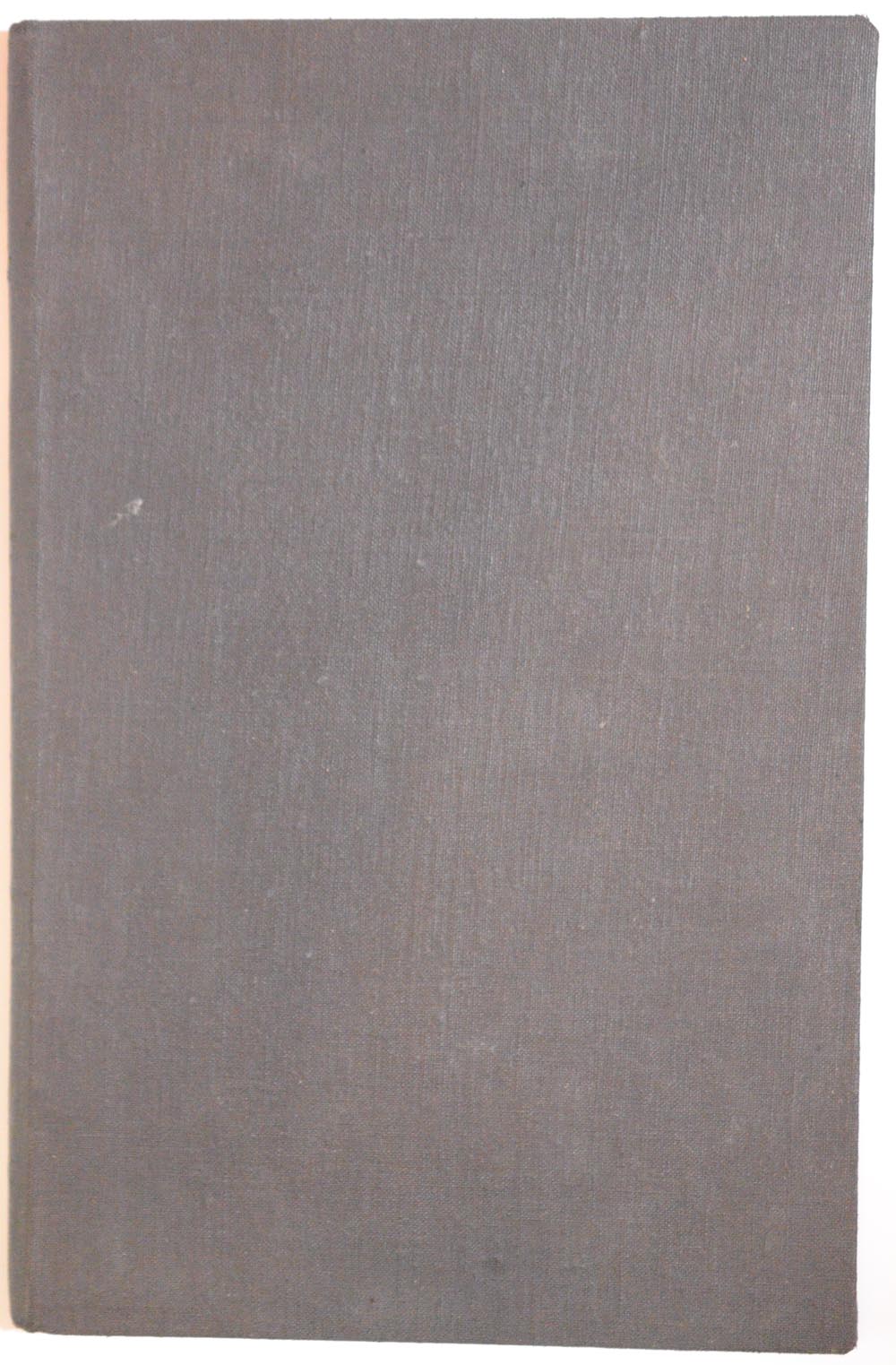| |
 (EGYPTIAN PENPAL ARCHIVE) (EGYPTIAN PENPAL ARCHIVE) |
|
|
|
|
| |
Price: $300.00 |
Stock# 4338 |
| |
A YOUNG EGYPTIAN WRITES PEN-PAL LETTERS TO AN AMERICAN GIRL
(EGYPTIAN PENPAL LETTERS). An archive of a dozen letters from a young Egyptian, Hassan Hafez Adb el Bari, to an American woman named Ruth O’Donnell. They range from 1938 to 1946 and state in part:
ALS. 2pg. 7” x 9”. August 25, 1938. Cairo. An autograph letter signed “Hassan Hafez Abd el Bari”: “…On November 14 I shall be sixteen years of age. Schools in Egypt are: four years in primary schools; 5 years in secondary schools (high schools); after that the pupil goes in any faculty which he prefers…Our family had spent this summer in our farm but I spent it in Cairo…”. The letter is in fine condition,
ALS. 2pg. 7” x 9”. September 8, 1938. Cairo. An autograph letter signed “Hassan”: “Our government will spend on the Egyptian part of New York Hair 250,000 Egyptian pound. The building will be like the Ancient Egyptian buildings. I think that you know that Cairo is the capital of our country. Cairo is the eighth city in large in all the world. You find in Egypt all means of transport: trains, aeroplanes, tramways, busses and at last ships in the Nile. All the cultivated lands in Egypt is watered by the Nile. The Nile is the second river in all the world. You find in Egypt also all sorts of amusement: cinemas, theatres and dancing halls. In towns the people wear suits and fezes are their heads covers In villages the farmers wear galabias (a galabia is like a log shirt).” The letter is in fine condition.
ALS. 2pg. 7” x 9”. December 18, 1938. Cairo. An autograph letter signed “Hassan”: “The people in Egypt are happy with the new Princess. Our King had called her ‘Feryual.’ In Egypt we have no Christmas because we are Moslems In Egypt we have our own feasts Every year we have two feasts: the small feast which last 3 days and it come in November. The big feast which lasts 4 days and it comes in February. So the Egyptian children do not know anything about Christmas. Arabic is our native language. We study English as just a subject in school. We do not have no dances connected with our school. We also have in our school a good orchestra which plays in the ceremonies. The winter in Egypt in few days is some cold The other days of is the winter are rather cold nor hot This good weather in winter attracts the tourists from all the world to Egypt. Thy summer is generally hot but ecept I the ports as Alexandria and Port Said.” The letter is in fine condition.
ALS. 3pg. 7” x 9”. April 11, 1939. No place. An autograph letter signed “Hassan”: “April 11, 1939. Last days were very hot because of the Khamasin. The Khamasin are dusty winds which come from the desert toward Egypt in this part of the year and it says for 50 days. I wish to tell you something about Egypt for there are many people in Europe and America seem not to know anything about Egypt. There are some rude tourists who come to Egypt and take a photograph of a clean beggar or something else and send it to their countries to be published in the newspapers over this title "one of the richest people in Egypt. I do not know why do these people do such a work. I want to tell you that Egypt is like any of the modern countries in the World, and that Cairo is one of the finest Capitals in the World and it is the eighth big city ifwe counted New York. Trams motor cars & aeroplanes are found in Egypt. Cinemas theatres, & music halls are scattered in Cairo and the large cities. One of the large Zoos in the World is found in Egypt (Cairo) Our Zoo is full of many and different animals and birds which cannot be found in other countries. Public gardens are also found in many part of every city and we have our Nile which is enough to have a look at its beautiful sights at sunset. Schools with their different kinds are opened inEgypt to every sort of people Our University contains many faculties and they are not less than those I the other countries. Daily, weekly and monthly newspapers and magazines can be bought cheaply in Egypt. The modern machines are used in many places I Egypt to help th farmers in their work for Egypt is a big agriculture country. So you see that the Egyptian Nation is like any other one.” The letter is in fine condition.
ALS. 3pg. 5” x 8”. July 19, 1939. Cairo. An autograph letter signed “Hassan”: “I am going to tell you a small bit about what you asked me for I have many works. In Egypt the people or the families are separated to three parts like any other country. 1.. The high life families In these families the girls and women sit with the men anywhere and do every thing with them. In these families the man marry the girl he chooses & whom he loved. 2. The poor families who are in the opposite direction of the lastfor they see that the girl who sis and talks with a man who is not a relative to her is impolite an the man in these families marry the girl chose by his father or mother and it perhaps may be a girl he did not see before. 3. The middle life families between 1 and 2 are separated to two parts a. The first part do as no. 1 do and I am or my family is of this part. B. The second part do as no. 2 do.” The letter is in purple ink and in fine condition.
ALS. 2pg. 6” x 7”. December 16, 1942. Giza. An autograph letter signed “Hassan”: “First I must apologize for not writing to you, since about 3 years, but it is not my fault, it is the war, it is that mad man called Hitler. I thought that the sea way is closed between America & Egypt except for military purposes, but few days ago a friend tolled me that letters could be sent.” The letter has a toning box and is in very good condition.
ALS. 3pg. 8” x 10”. April 1, 1945. No place. An autograph letter signed “Hassan”: “About snow in Egypt there are no parts in our country cold enough for snow. About American movies I try to see as much of them as I can. Now, I go once a week to the cinema, during the holiday I go thrice or thrice (sometimes) a week. I have seen Princess Droke" it is a nice one. Three days ago I have been to the Metro theatre, the film was ‘Speech of Moskow’ it was not bad. I think will have a nice attraction in two weeks at most & that is Patty Grable in Pin up Girl...You wonder to what extent the people in Egypt speak English & I answer that only the educated people speak that language. We study it as a subject in primary and secondary schools, we study French also in secondary schools. All the study & lectures in the following faculties are in English: Faculty of Engineering, Medicine and Science. Other faculties in the University uses the Arabic Language. The reason is that all reference books for the above mentioned three faculties are in English. Last January we had our half year holiday & our faculty made up a scientific journey (for the B. Sc. Degree students only) from the top of our country to its bottom. It lasted for 15 days. We began with Alexandria & the neighboring cities then we went to upper Egypt, we visited Luxor where we say the marvelous remains & antiquettes of the Ancient Egyptians...We visited Aswam where we saw the Aswam Dam, it is a very large structure, its length about 2 Kms with 180 openings. When war is over we hope to generate electricity for the water flow at that dam.” The letter is in fine condition. |
4338

|
|
| |
| |
 (ENGLISH CURRENCY SYSTEM) (ENGLISH CURRENCY SYSTEM) |
|
|
|
|
| |
Price: $500.00 |
Stock# 4557 |
| |
EARLY ENGLISH ATTEMPTS AT PAPER CURRENCY - THE EARL OF ROCHESTER SIGNS A LENGTHY DOCUMENT TO PAY JUDGES. A FEW YEARS LATER, THE FIRST ENGLISH BANKNOTES WOULD MAKE THIS PROCESS FAR SIMPLER
LAWRENCE HYDE, FIRST EARL OF ROCHESTER (1641-1711). Rochester was named a Lord of the Treasury in 1679. In 1681, he was elevated from Viscount Hyde of Kenilworth to Earl of Rochester. He had friction with King James II and was dismissed from the Treasury in December 1686 with a substantial pension.
ROBERT HOWARD (1626-1698). An English Restoration dramatist, Howard is best remembered for The Indian Queen and The Committee, as well as his ongoing literary feud with John Dryden. During the English Revolution, Howard sided with the Royalists at the Battle of Newbury and was imprisoned. After the Restoration, he was elected to Parliament and made auditor of the Exchequer.
DS. 1pg. 8 ½” x 8 ½”. May 15, 1686. Whitehall Treasury Chambers. A document signed “Rochester”. It was written to Robert Howard, the auditor of the Exchequer: “At my hearty Commendation, By Virtue of his Ma[jest]y’s Letters Patents authorizing the payment of the yearly Sallarys [sic] to the Judges, These are to pray and require you to make and pass Debentures for payment of such Summes of moneye [sic as] are and shall from time to time be due to Richard Hearn Serj[ean]t at Law and one of the Barons of his Ma[jest]y’s Court of Exchequer upon his Sallary of One thousand pounds p[er] an[num] according to the direction of the said Letters Patents, and let [sic] the same be satisfied out of any his Ma[jest]y’s Treasure now or hereafter being and remaining in the receipt of the Exchequer not appropriated to particular uses by Act of Parliament, For which this shall be your Warrant. Trea[sur]y Chamber the 15th day of May 1686. Rochester”. The document is addressed “To my very Loving friend Sr Rob’t Howard, Auditor of his Ma[jest]y’s Rec[ords] of Excheq[ue]r.” This document concerns the creation of some of the first exchequer bills of credit, which was England’s first attempts at paper currency. Obviously, it was cumbersome to pay people, since lengthy documents, such as this example, had to be written out and signed by an official. The first bank to permanently use banknotes was the Bank Of England in 1695. The currency promised to pay the bearer the value of the note on demand. The next year, the Bank of Scotland followed suit. The document has chipping to the margins and three tape stains to the edges, and is in very good condition. The manuscript comes with numerous articles about the Scottish economist John Law, who first introduced paper money in France, and lecture notes from what seems to be an economics professor who used this document in his or her classes. |
4557

|
|
| |
| |
 (ESKIMO LETTER) (ESKIMO LETTER) |
|
|
|
|
| |
Price: $150.00 |
Stock# 3951 |
| |
DANISH MUSEUM DIRECTOR SOPHUS MÜLLER ADVISES AMERICAN CURATOR WALTER HOUGH ON AN ESKIMO STONE LAMP, RECOMMENDS ARTICLES BY DANISH EXPERTS ON GREENLAND
WALTER HOUGH (1859-1935). Hough was an American ethnologist and a curator at the United States National Museum in Washington D.C., which is now The Smithsonian Institution.
SOPHUS MÜLLER (1846-1934). Müller was a Danish archaeologist and director of the National Museum of Denmark.
LS. 1pg. February 17, 1897. Copenhagen. A letter signed “Sophus Müller” as Director of Denmark’s National Museum, on museum letterhead. Müller writes to Walter Hough, who was then an assistant curator of ethnology at the United States National Museum. The letter concerns a stone lamp from Greenland owned by the U.S. National Museum. To reply to your favored of January 17, I very much regret not being able to furnish any exact information respecting the locality of the Eskimo stone lamps in your museum. That they are from the west coast of Greenland is quite certain, but a more precise indication of the spot, where they have been collected, does not exist in our catalogues. These lamps are common in West Greenland; our collection contains a great number. For the form of East Greenland lamps I can refer to the figure No 14 Plate XXIV of Capitain Holms ‘Ethnografisk Skizze af Angmagsalikerne’ in the ‘Meddelelser om Gronland’ vol 10. Yours truly Sophus Müller”. After Greenland became a Danish colony in 1814, Danish scholars and explorers took a great interest in studying its history, culture, and geography. Meddelelser om Gronland was a periodical on the subject; it was established in 1879 by Danish scientist Johannes Frederik Johnstrup (1818-1894). The article Müller recommends was written by Danish naval commander and explorer Gustav Frederik Holm (1849-1940). The letter is in good condition with minor losses to the bottom right-hand corner that do not affect any of the text. |
3951

|
|
| |
| |
 (FLOGGING PHOTOGRAPHIC ALBUM) (FLOGGING PHOTOGRAPHIC ALBUM) |
|
|
|
|
| |
Price: $375.00 |
Stock# 4739 |
| |
AN ARCHIVE OF PHOTOGRAPHS SHOWING FLOGGING IN THE PACIFIC REGION
(FLOGGING PHOTOGRAPHS). Archive. No date [circa 1910s]. No place [likely a place in the Pacific, perhaps the Philippines]. An archive of images showing corporal punishment for natives. Some of the men are bound and hooded, and some images show multiple lashings across their backs. There are sixteen photographs attached to three independent pages (they were probably removed from a larger album). Five photographs are hand-colored and the remainder are black and white. Two images show white men in Western dress, suggesting occupation. There are also a couple photographs of bamboo walls and grass huts, suggesting the South Pacific. A disturbing collection. |
4739

|
|
| |
| |
 (FRENCH TOUR JOURNAL) (FRENCH TOUR JOURNAL) |
|
|
|
|
| |
Price: $250.00 |
Stock# 5397 |
| |
THE 1951 JOURNAL OF AN AMERICAN WRITER LIVING IN PARIS AND TRAVELLING IN WESTERN EUROPE
(EUROPEAN TOUR JOURNAL). Handwritten journal. May 22-December 18, 1951. France, England, Italy, and Switzerland. 101 pages. The journal of an American man living in Paris and travelling throughout France and surrounding countries. The early part of the journal describes his daily life in Paris, including friends and social life, love life, gossip, literature, music, and aspirations as a writer. He also writes extensively about tennis, of which he was an enthusiastic and knowledgeable fan. He attends an international tennis tournament in Paris in May and goes to London for Wimbledon in late June. The latter two-thirds of the journal recount the author’s travels. First, he takes a whistle-stop tour of France, visiting places such as Rouen, Mont St. Michel, Biarritz, and Lourdes. Then, he spends time in Italy and Switzerland before ending up back in Paris. In each location, he describes leisure activities, visiting museums and churches, hotels, and the local scenery in greater or lesser detail. Most notably, he visits the beaches of Normandy, only a few years after D-Day: “…Finally I got to the tiny hamlet of St. Laurent s Mer & the sign ‘Visitez Ohama Beach.’ I drove down a quiet road & suddenly burst out onto the beach itself, a lonely, barren stretch made more so by a high mind to the presence of the resting hulks of invasion craft lying mortally stranded just offshore in an angry, green sea. There are piles of rusted, neglected equipment corresponding to the wrecks in the water which are being collected together by French workmen. A few campers had pitched their tents amongst gasoline drums, huge cannisters & decayed tank. I drove slowly along the beach made muddy by recent rain until I came to what had once been a German gun emplacement which according to a plaque had been utilized on D-Day by the CG of the Engineers as his HQ. The German gun, a 37 mm, still faced through an aperture staring emptily out at the wrecks offshore. Amongst these latter were the concrete slacks that I guessed to be the remains of the preliminary, artificial harbour they had sunk right away. The scene with the forgotten appurtenances of war was one of the most indescribable desolateness & I felt in the grip of the strongest of emotions. June, 1944 came back to me & how we heard the news of the invasion over loud-speakers in Hangar AD-1 at Burtonwoof & if I listened carefully I felt I could hear the guns booming & the l/c’s chugging up to shore & the GI’s splashing out in the cold water & moving slowly but desperately up the beach pinned down by the German fire from concrete emplacements & from the high, green eminence which rises abruptly from the beach & runs all along the shore. How many men had met their end right where I was standing? How many had coughed out their hopes & their life in the din of that horror never understanding why it had to happen to them? But I couldn’t ear a thing, only the sound of the wind & the sea and all I could see were those obscene wrecks & the Frenchmen working among them…”. This lively journal is in fine condition overall, and the writing is uniformly easy to read. |
5397

|
|
| |
| |
 (GUADELOUPE) (GUADELOUPE) |
|
|
|
|
| |
Price: $400.00 |
Stock# 6055 |
| |
1759 DOCUMENTS PROVIDES LIST OF BRITISH SOLDIERS SHORTLY AFTER SUCCESSFUL CAPTURE OF GUADELOUPE DURING SEVEN YEARS WAR
GUADELOUPE. The Caribbean island of Guadeloupe is a French overseas department.
DS. 2 pg. 6” x 8”. February 16, 1759. Guadeloupe. A document signed “Geo. Highton Lieu in the 68th Regiment of Foot”. The document is signaling the “Return of the Men at Work of the 63: Regt Commanded by Colo Watson…”. The front of the document provides a list of the soldiers involved in the work party. They are organized by their company. A bill for their work is listed on the front: three shillings for the one officer (most likely Watson), two shillings for the lieutenant, one shilling and six pence for one corporal, two shillings for one mason, and two pounds and one shilling cumulative for 41 privates. The back of the document indicates that Highton is ordering a paymaster, John Barnes Esq, to pay “the above bill by me”. David Watson was a Scottish officer and military engineer in the British Army tasked with the colonelcy of the 63rd Regiment of Foot. This regiment took part in the successful invasion and seizure of French Guadeloupe in the West Indies in 1759. Guadeloupe was so economically important to the French that they willingly traded French Canada to the British in the Treaty of Paris in order to reacquire it. This document was written just weeks into the invasion, and so it is likely that some of the men listed on this document were among the nearly 800 British that died on the island that year. Known examples listed who were later KIA include Lieutenant-Colonel P. Debrisay, Major John Trollop, and Lieutenant George Highton himself, who died of disease. The document is in fine condition with some folds. |
6055

|
|
| |
| |
<Previous 6> <Next 6>
|
 |






